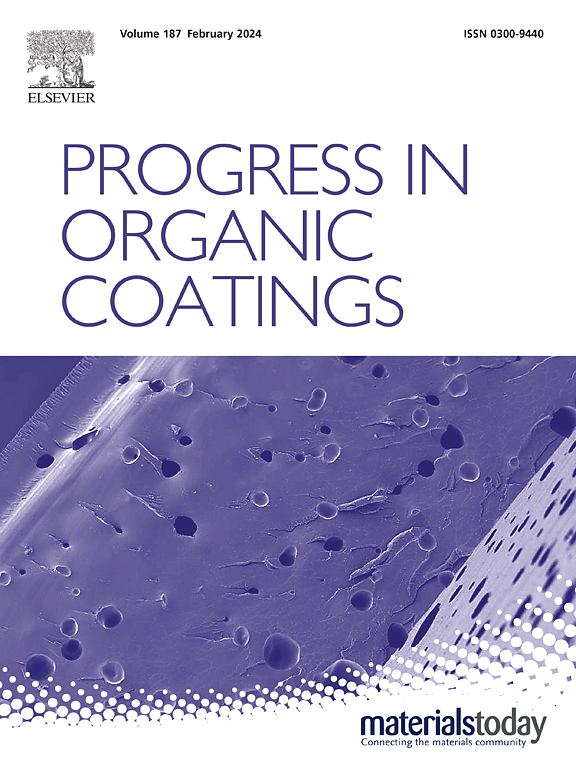A novel superior corrosion resistance polyimide–MXene (PI/Ti3C2Tx) composite coating for low alloy mild steel
IF 6.5
2区 材料科学
Q1 CHEMISTRY, APPLIED
引用次数: 0
Abstract
Two-dimensional (2D) nanomaterials such as graphene, boron nitride/white graphene, molybdenum disulfide, and MXene-based composite coatings are known to have anti-corrosion properties. However, interactions with saline environments can significantly influence the corrosion resistance behavior of the above coatings. Here, we reported MXene-polyimide based superior corrosion resistance coating on low alloy mild steel. MXene-polymer interactions serve as an efficient electron donor for the corrosion pathway, where these electrons modify oxygen-containing functional groups on MXene surfaces to generate reactive hydroxides. Therefore, the cathodic electrochemical reaction due to oxygen reduction is significantly controlled by MXene, as confirmed by the reduced cathodic slope in the Tafel polarization measurements. There is an increase in corrosion resistance of MXene-polyimide composite coating (2.58 × 1012 Ω·cm2) compared to the pristine polyimide (1.77 × 106 Ω·cm2), studied by electrochemical impedance spectroscopy using 3.5 % NaCl solution. As per the salt spray test, there is a significant enhancement in corrosion resistance of MXene-polyimide composite coating (>500 h, 5 % red rust) compared to the pure polyimide coating (240 h, 5 % red rust). The addition of MXene to the polyimide matrix improves its adhesion strength (1.63 MPa to 2.3 MPa) with steel and electrical conductivity (7.5 × 10−6 S·cm−1 to 1.0 × 10−2 S·cm−1) of the composite coating.

求助全文
约1分钟内获得全文
求助全文
来源期刊

Progress in Organic Coatings
工程技术-材料科学:膜
CiteScore
11.40
自引率
15.20%
发文量
577
审稿时长
48 days
期刊介绍:
The aim of this international journal is to analyse and publicise the progress and current state of knowledge in the field of organic coatings and related materials. The Editors and the Editorial Board members will solicit both review and research papers from academic and industrial scientists who are actively engaged in research and development or, in the case of review papers, have extensive experience in the subject to be reviewed. Unsolicited manuscripts will be accepted if they meet the journal''s requirements. The journal publishes papers dealing with such subjects as:
• Chemical, physical and technological properties of organic coatings and related materials
• Problems and methods of preparation, manufacture and application of these materials
• Performance, testing and analysis.
 求助内容:
求助内容: 应助结果提醒方式:
应助结果提醒方式:


